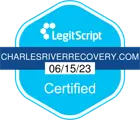How Long Does Opioid Withdrawal Last?
Overcoming opioid addiction is a difficult task. However, thanks to proven programs and helpful tools, there is hope for those who are suffering from opioid dependency. Perhaps you are worried about going through opioid withdrawal and wondering how long it takes. In the United States, more than three million individuals currently have or have had a dependency on opioids. The good news is that you can go through detox and move forward with your recovery.
How Do People Become Dependent on Opioids?
For many individuals with opioid use disorder (OUD), the condition started accidentally with a prescription for opioid pain medication. The common scenario is that the individual was injured or acquired an acute or chronic condition and was prescribed opioid pain medications by the doctor. This was done in order to improve the client’s comfort. Common opioid medications include codeine, Vicodin, Percocet, and Demerol. Individuals who were in severe pain may have been prescribed morphine or oxycontin.
While opioid medications have been around for a long time, their use greatly increased during the 1990s, and it can be traced to a pain medication campaign that downplayed the risks of opioid prescriptions and their likelihood for abuse. By 2015, an estimated 91.8 million people in the U.S. were using prescription opioids to manage pain.
The bad news is that opioids have a high rate of misuse that often leads to dependency. In fact, an increased tolerance to the medication can happen in as little as a few days, and the withdrawal symptoms of discontinuing the medication can be severe. Fear of withdrawal symptoms can lead people to continue their opioid use instead of formulating a plan with their doctors that involves a slow tapering of the opioid and eventual cessation.
In 2016, an opioid epidemic was declared in the United States. In order to curb this, the CDC developed and issued new guidelines about the prescribing of opioids for chronic pain. The goal of these guidelines was to prevent doctors from prescribing too many opioids and prescribing them when another pain medication would work just as well. These guidelines didn’t ban the prescribing of opioid pain medications. However, many doctors and clinics stopped prescribing them as a result of the new guidelines, and insurance companies stopped covering opioid medications for long-term use. It’s believed that the sudden reduction in the availability of pain management clinics and opioid prescriptions contributed to an increase in individuals using heroin and fentanyl. It’s also listed as a possible reason for the increase in overdoses over the past few years.
According to the Office of National Drug Control Policy, in 2015, there were 12,990 overdose deaths. In 2014, there were only 10,574 overdose deaths, which constitutes a 23% increase from 2014 to 2015. In 2016, there were 63,600 overdose deaths, according to the CDC, and in 2021, there were 91,799 overdose deaths with an estimated 82.3% caused by synthetic opioids.
How Can You Determine If Someone Is Dependent on Opioids?
It’s important to understand that no one starts taking opioid medications with the belief that they’re going to become dependent. Instead, they’re usually prescribed opioids by a doctor in order to treat pain from a chronic or acute injury or condition. Over time, the body becomes accustomed to the medication, and a physical dependency forms. An individual may have an opioid dependency if attempts to stop taking the opioid result in withdrawal symptoms. Symptoms can include a desire to take more of the medication and excessive sweating or feeling uncomfortable and anxious.
Additional signs of opioid dependency include taking more than the prescribed dose, experiencing negative health effects from taking the medication, and spending money they don’t have in order to obtain more opioids. Personal and family relationships may also become strained.
When Do Opioid Withdrawal Symptoms Begin?
Opioid withdrawal symptoms can begin within eight to 24 hours after the last dose of short-acting opioids or within 12 to 48 hours after the last dose of long-acting opioids. Once the withdrawal symptoms begin, individuals may experience diarrhea, excessive sweating, hot and cold flashes, insomnia, muscle cramps, nausea, and vomiting. In severe cases, the individual may experience opioid withdrawal syndrome, which is characterized by an increased severity in the nausea, vomiting, fever, sweating, and diarrhea symptoms. The persistent vomiting and diarrhea can lead to dehydration as well as elevated salt levels in the blood. If this condition isn’t treated in a timely manner, it can lead to heart failure and possibly death in extreme cases. This is especially true for those with other underlying medical conditions. However, proper monitoring and medical intervention can help prevent such outcomes.
Opioid Withdrawal Peak
For individuals who were taking short-acting opioids, symptoms usually peak within two to three days. For those who were taking long-acting opioids, symptoms usually peak between three and eight days. During this time, the individual may experience an increased heart rate, a rise in blood pressure, headaches, and dizziness. Nausea, diarrhea, and insomnia may also become worse and lead to a loss of appetite as well as weight loss.
Resolution of Symptoms
For individuals who were taking short-acting opioids, symptoms typically start to resolve between four and 10 days after the last dose. Symptoms can take several weeks to resolve for those individuals who were taking long-acting opioids. During this time, the individual may experience cravings and an increase in psychological symptoms, including anxiety, depression, mood swings, and a loss of motivation.
Ongoing Withdrawal Cravings
Some people experience ongoing withdrawal symptoms after their initial detox. This can last several weeks or months, depending on the individual and the severity of their dependency. During this time, the individual may still experience intermittent cravings and a desire to use again as well as psychological symptoms. Because of this, it’s important to seek treatment at a qualified rehabilitation center. Long-term support groups can also provide the client with help in overcoming these psychological challenges related to cravings and desires.
Peer workers can also be very helpful in encouraging people to remain sober long after their withdrawal symptoms have subsided. These workers are tasked with helping people stay engaged in their own recovery efforts. This type of help extends beyond rehab facilities and into the client’s everyday life. Mutual support and respect play a key role in peer support. Additionally, peer workers can advocate for people in recovery and help them to build new relationships in the community.
How Can a Recovery Center Help With Opioid Withdrawal?
Many drug rehabilitation centers, including Charles River Recovery, have programs that help with detox. These programs provide various medical services that help manage the symptoms of withdrawal.
During the detox and recovery phases, treatment for opioids often involves medication-assisted treatment (MAT). This helps manage the withdrawal symptoms while decreasing the positive effects of taking the drug. Common medications used in MAT treatment include buprenorphine, naltrexone, and methadone. By controlling the withdrawal symptoms and cravings, individuals are better able to focus on their recoveries. MAT works best when it’s accompanied by counseling and therapy. This may include individual and group therapy as well as cognitive behavioral therapy and family therapy in an inpatient or outpatient setting.
What Is Inpatient Opioid Treatment?
Inpatient treatment, sometimes also referred to as residential treatment, is a recovery program where the individual lives at the drug treatment center for the duration of the program. These programs can be short term, lasting between 30 and 45 days, or they can be long term, lasting between 60 and 90 days. Individuals who are at a higher risk for relapsing or who have tried other programs and started using again are encouraged to try residential treatment programs.
What Is Outpatient Treatment?
Outpatient treatment does not require living at the rehabilitation center. Instead, the individual travels to the center in order to receive all their treatments. This usually involves being at the center multiple days a week for several hours. Outpatient treatment typically lasts from 30 days to six months with the average timeframe being about six weeks.
What Are Some Additional Tips to Help With Opioid Recovery?
Opioid recovery is possible, and there are some coping actions you can do to help feel better during your recovery. One of the best things you can do is stay hydrated by drinking plenty of water or clear, non-alcoholic beverages. Eating healthy and nutritious meals can help give your body the macro and micronutrients it needs to heal. If you’re feeling anxious, deep breathing exercises and meditation can help.
It’s also important to stay active. Going for a walk every day or joining a gym can help keep you busy and improve your physical health, and getting enough sleep can help you feel rested and ready to tackle each new day. If you experience a strong desire to start using opioids, talking to a counselor or therapist can help. It’s also a good idea to build a strong support group in the community and with your family and friends.
How Can Charles River Recovery Help With Opioid Withdrawal?
At Charles River Recovery in Weston, MA, we offer opioid and heroin use treatment. This program includes detoxification and stabilization. The detox part of the treatment helps you stop using opioids. During this phase, your symptoms will be monitored in order to ensure your health. Once you’ve completed the detox phase, our opioid stabilization services can help you remain comfortable while continuing treatment.
To learn more about our addiction services and to start the admissions process, contact Charles River Recovery.






